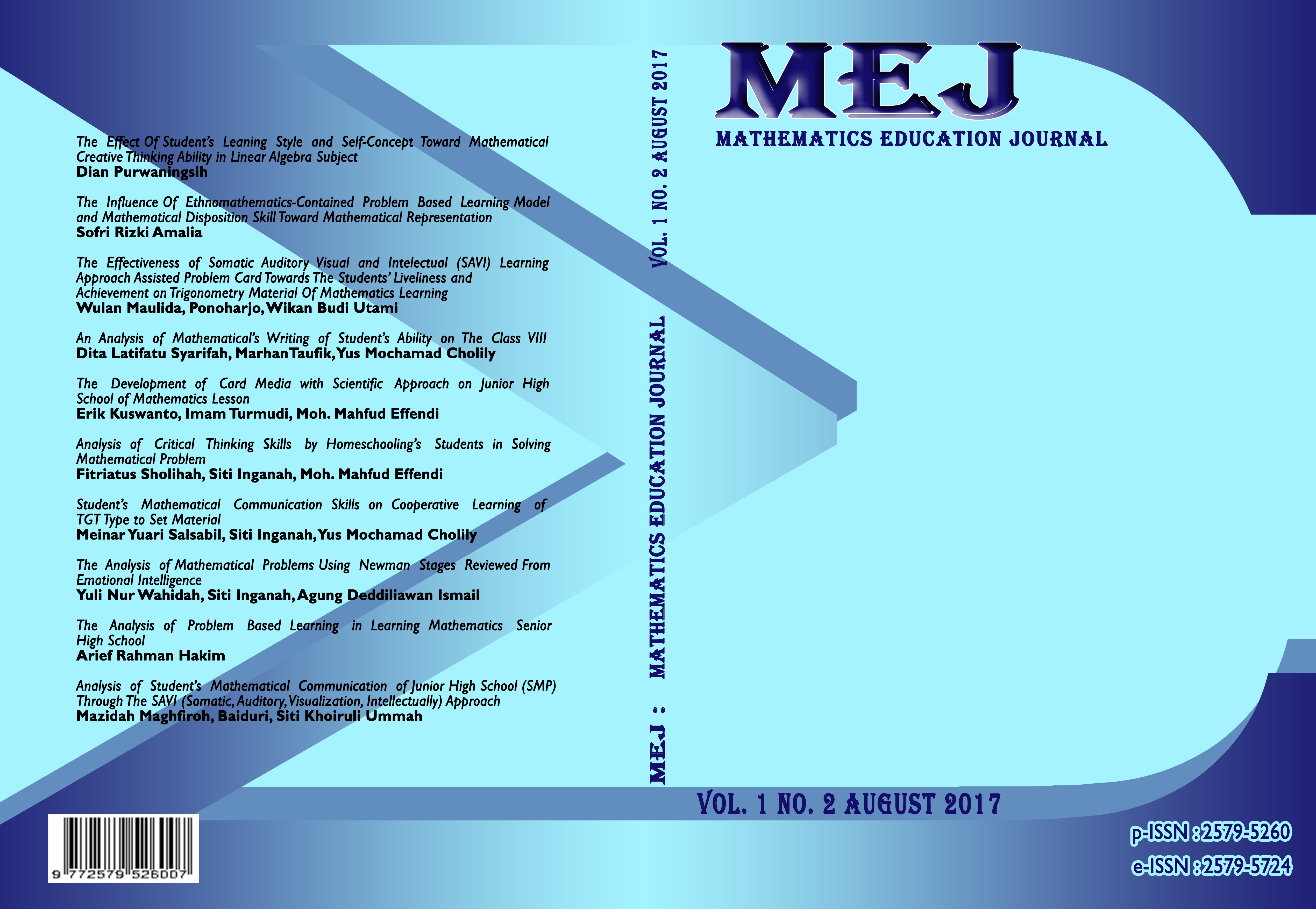THE ANALYSIS OF PROBLEM BASED LEARNING IN LEARNING MATHEMATICS SENIOR HIGH SCHOOL
DOI:
https://doi.org/10.22219/mej.v1i2.4631Keywords:
Problem Based Learning(PBL), Level of responsiveness and motivation of student learningAbstract
This study aims to determine the level of response, the level of motivation,student learning outcomes and learning process using Problem Based Learning
on learning mathematics. This research is descriptive research where there is
no manipulation only to describe and to analyze the data obtained. This
research uses quantitative research methods with the subjects of the study
which amounted to 33 people. Data collection techniques used include
questionnaires, observations, interviews and tests. Data analysis used in this
research is qualitative analysis technique and quantitative analysis. The result
of the research indicates that the students response level to Problem Based
Learning is high with the percentage of achievement of 72.02% and the
students' motivation level with the percentage of achievement of 70.05%.
Student learning outcomes obtained using Problem Based Learning are quite
satisfactory. With the percentage of achievement level reached 75.75%. With
the Minimum Exhaustiveness Criteria (KKM) score at the school is 75, so that
all students meet the given KKM.
Downloads
Downloads
Published
Issue
Section
License
Authors who publish with MEJ (Mathematics Education Journal) agree to the following terms:
For all articles published in MEJ, copyright is retained by the authors. Authors give permission to the publisher to announce the work with conditions. When the manuscript is accepted for publication, the authors agree to automatic transfer of the publishing right to the publisher.
Authors retain copyright and grant the journal right of first publication with the work simultaneously licensed under a Creative Commons Attribution-ShareAlike 4.0 International License that allows others to share the work with an acknowledgment of the work's authorship and initial publication in this journal.
Authors are able to enter into separate, additional contractual arrangements for the non-exclusive distribution of the journal's published version of the work (e.g., post it to an institutional repository or publish it in a book), with an acknowledgment of its initial publication in this journal.
Authors are permitted and encouraged to post their work online (e.g., in institutional repositories or on their website) prior to and during the submission process, as it can lead to productive exchanges, as well as earlier and greater citation of published work (See The Effect of Open Access).

This work is licensed under a Creative Commons Attribution-ShareAlike 4.0 International License.










